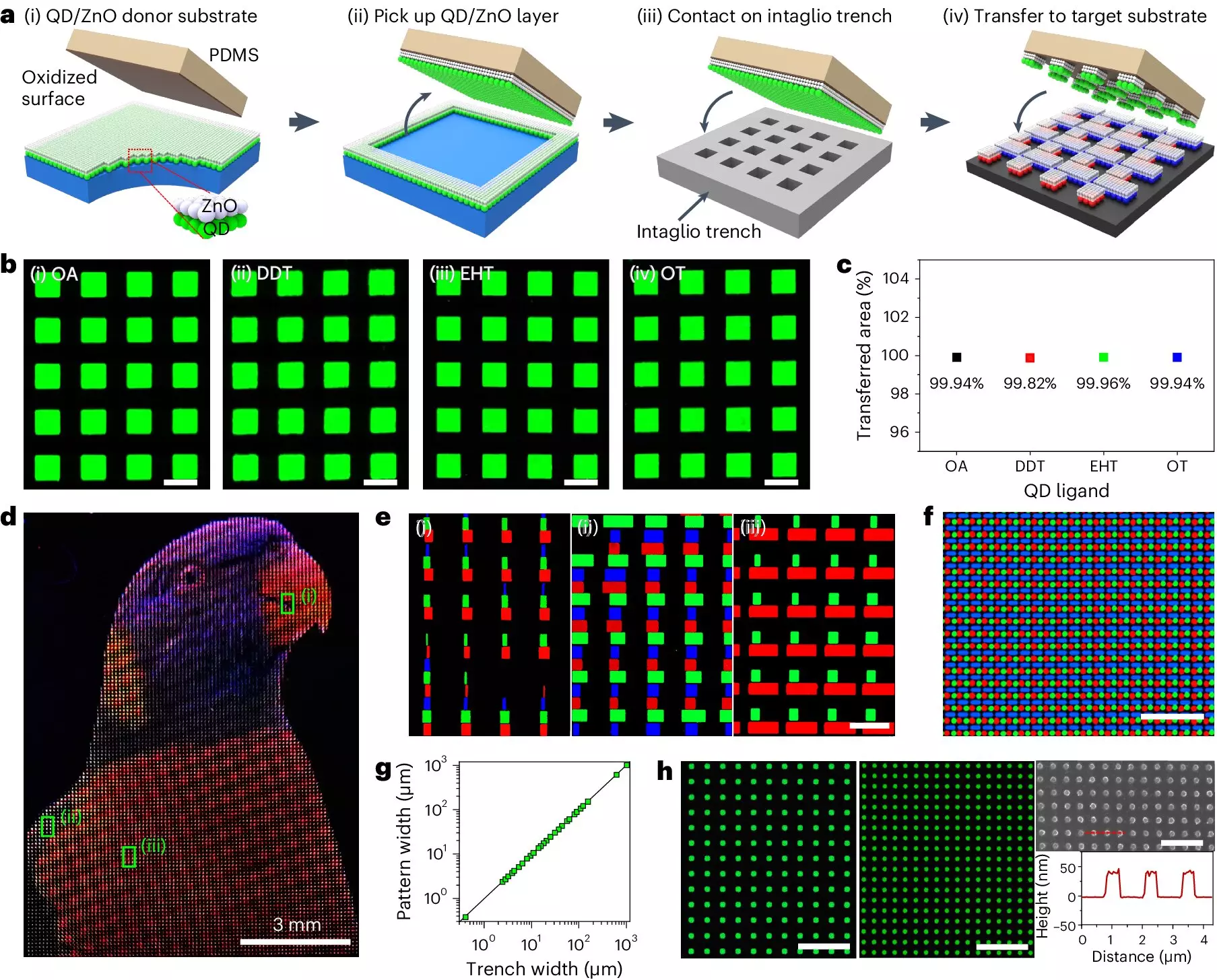In a recent study published in Nature Photonics, a research team unveiled a cutting-edge double-layer dry transfer printing technology aimed at revolutionizing the world of augmented reality (AR) and virtual reality (VR) displays. This groundbreaking technology has the potential to enhance the immersive experience for users by transferring light-emitting and electron-transferring layers onto a substrate simultaneously.
The demand for AR, VR, and wearable displays is rapidly increasing with the advancements in wearable, mobile, and Internet of Things (IoT) technologies. However, the existing display technologies face challenges such as conveying large amounts of information on small screens without causing dizziness. Quantum dot nanoparticles are considered the next generation of display light-emitting materials due to their high color purity and reproduction capabilities.
The Development of Double-Layer Thin Films
DGIST Professor Ji-woong Yang, along with UNIST Professor Moon-kee Choi and Taeg-hwan Hyun of the IBS Nanoparticle Research Center, collaborated to develop a dry transfer printing technology that addresses the limitations of conventional approaches. The new technology enables the creation of high-resolution pixel patterns and light-emitting devices with ultra high-definition and efficiency. The researchers achieved high external quantum efficiency (EQE) of up to 23.3% by reducing interfacial resistance, which enhances electron injection and controls charge transport.
The double-layer thin films created using the new technology exhibit exceptional qualities, with ultrahigh-definition patterns of quantum dots reaching up to 25,526 pixels per inch (PPI). Through repeated printing, the researchers were able to cover an area of 8 cm x 8 cm, demonstrating the feasibility of mass production for future commercialization. This breakthrough is a significant step towards creating brighter and more efficient light-emitting devices for AR and VR applications.
Professor Ji-woong Yang emphasized the importance of the double-layer dry transfer printing technology in fabricating high-efficiency light-emitting devices for AR and VR displays. With an EQE of up to 23.3%, the technology matches the theoretical efficiency of quantum dot light-emitting devices. This research paves the way for higher resolution screens in VR and AR, opening up new possibilities for immersive and realistic visual experiences. Professor Moon-kee Choi expressed his enthusiasm for the potential impact of this technology on the future of display technologies.


Leave a Reply